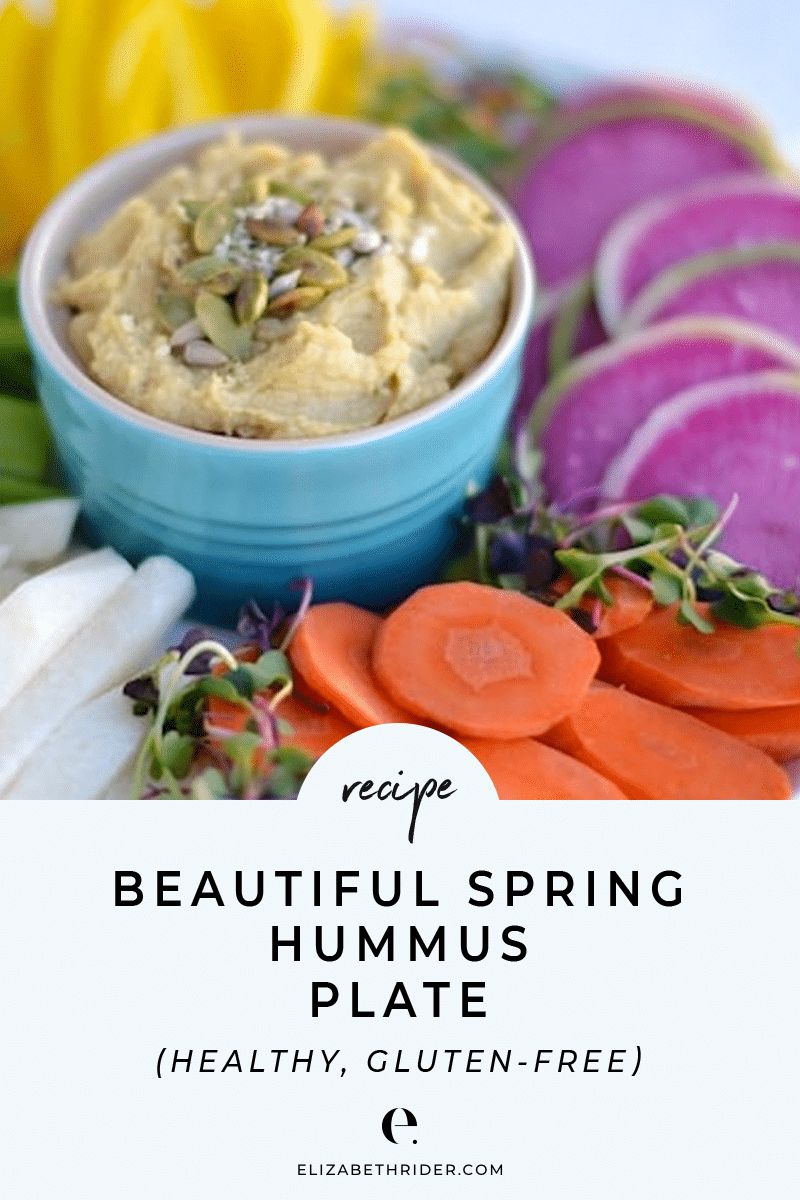
There’s nothing worse on a party buffet than a sad hummus plate. Watery hummus with some plain veggie sticks doesn’t make for the most appetizing of snacks.
Lucky for us spring veggie season is here. Over the past few years more interesting items like jicama and watermelon radishes have become more available in mainstream grocery stores.
We all know carrots and celery pair beautifully with hummus, but there are other vibrant, colorful, and crunchy options to add to the mix.
This Spring Hummus Plate is:
Healthy
Gluten-Free
Dairy-Free
Soy-Free
Nut-Free
Vegan
Simple to Prepare
Very Low in Sugar
Diabetic-Friendly
Low Carb
High Fiber
Delicious
Beautiful
Fun to Eat
Watermelon Radish
Watermelon radishes are a root vegetable that originated in China. They’re an heirloom variety of daikon radishes and a member of the Brassica family (aka cruciferous vegetable) which also includes things like broccoli, cauliflower, and cabbage. Watermelon radishes are full of fiber and phytonutrients, and very low in sugar. While they’re beautiful like a watermelon, they don’t taste like a watermelon. Their flavor is similar to a really mild radish; lots of crunch without the spiciness of other radishes. It’s light green or white on the outside and a beautiful pink on the inside; just scrub the dirt off and slice it thin on a mandoline slicer, or chop it into sticks and enjoy raw. Thinly sliced rounds are flexible and fold into a scoop to make the perfect hummus delivery system.
Jicama
Jicama (pronounced “HICK-ah-mah” in English or “HEE-kah-mah” in Spanish) is a tuberous root vegetable from the Fabaceae family, commonly known as yam bean. But it doesn’t really taste like a yam or a bean so go figure. I’ve heard jicama described as a “savory apple” which is spot on. It originated in Mexico and sometimes is called a Mexican potato. It’s kind of like a cross between an apple and potato with a really distinct crunch. Like watermelon radishes, they’re full of fiber and phytonutrients and very low in sugar. Once you try it you’ll be hooked! It looks like a big light brown misshaped potato in the produce section of the grocery store. Peel it with a veggie peeler or knife to expose the beautiful white edible part, then chop it into sticks and enjoy it raw.
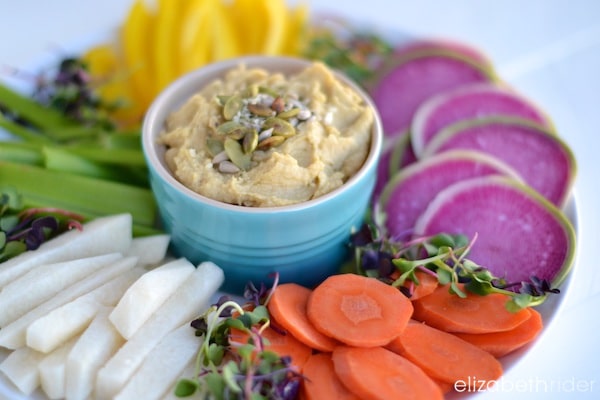
The hummus itself is really easy to make. So many store-bought hummuses are made with canola oil or other unhealthy oils, and contain preservatives to keep it shelf stable. Making your own at home also allows you to control the flavor and nutrition. Add more or less tahini, lemon, or other ingredients to your liking. Learning how to make your own hummus at home is a much healthier—and tastier—option.
The hummus can be made in advance up to 3 days and stored in the refrigerator. Chop the veggies the day you want to serve for fresh/crisp dippers.
Beautiful Spring Hummus Plate
Prep time: about 15-20 minutes
Total time: about 15-20 minutes
Hummus Ingredients:
- 1 clove garlic, peeled and smashed
- 1 15 oz. can chickpeas (garbanzo beans), drained and rinsed
- 2 tablespoons tahini (sesame seed butter/paste)
- 2 tablespoons lemon juice
- 1/4 cup extra virgin olive oil
- 1/2 teaspoon sea salt
- Optional: a few tablespoons of filtered water if needed for a smoother consistency
- Optional: seed mix (I used pumpkin, sunflower, hemp & chia) or extra whole garbanzo beans for garnish
A food processor is your best option as the hummus is easier to scrape out after it’s prepared. A blender will work, too.
Hummus Plate Veggies:
- 1 watermelon radish, scrubbed clean and thinly sliced on a mandoline
- 2 large carrots, cleaned and sliced on the diagonal into oblong coins
- 1 jicama, peeled and sliced into sticks (1 jicama yields a lot of veg, you’ll have some left over for salads)
- 4-6 stalks of celery, cleaned and cut into 4-inch pieces (leave the leaves on for a pretty presentation)
- 1 yellow bell pepper, sliced into sticks
- Microgreens or sprout for garnish (optional)
Directions:
Prepare the hummus. Add the garlic clove alone to your food processor or blender and process/blend for 20 seconds until finely chopped. (This works better in a food processor and ensures the garlic becomes fully incorporated). If you’re using a blender, grate or finely chop the garlic. Add the rest of the ingredients except the olive oil to the bowl and process/blend for 1 minute. Scrape down the sides. Turn the processor/blender back on and stream in the olive oil, blending until smooth. Taste and adjust the seasoning if desired. Add a few tablespoons of filtered water, one tablespoon at a time, if needed for a smoother consistency. (I like thick hummus so I don’t usually do that.) Store in an airtight container in the refrigerator up to 3 days.
Arrange your plate. Pictured here: put the hummus in a small bowl in the center of a round plate. Arrange the veggies in groups around the bowl, then garnish in between each section with microgreens or sprouts. Sprinkle the top of the hummus with raw seeds, a few extra whole garbanzo beans, chopped parsley, or a drizzle of extra virgin olive oil.
Pin It:
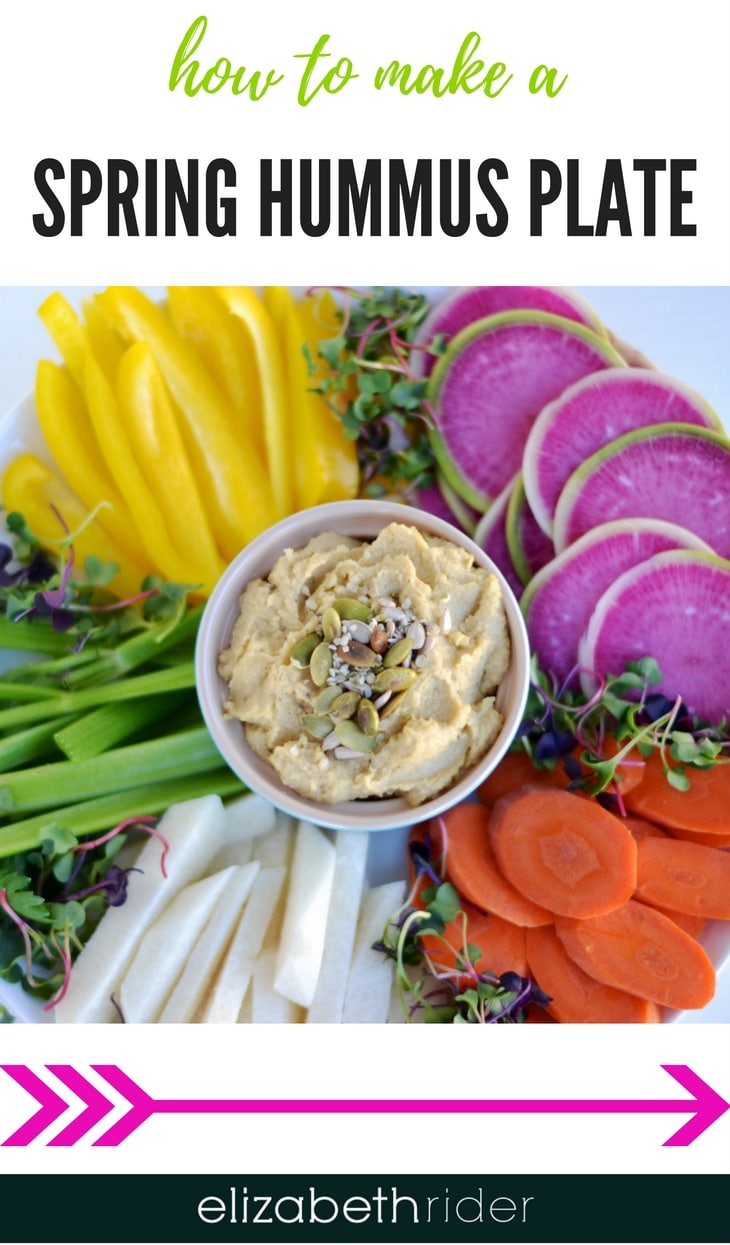
Enjoy!
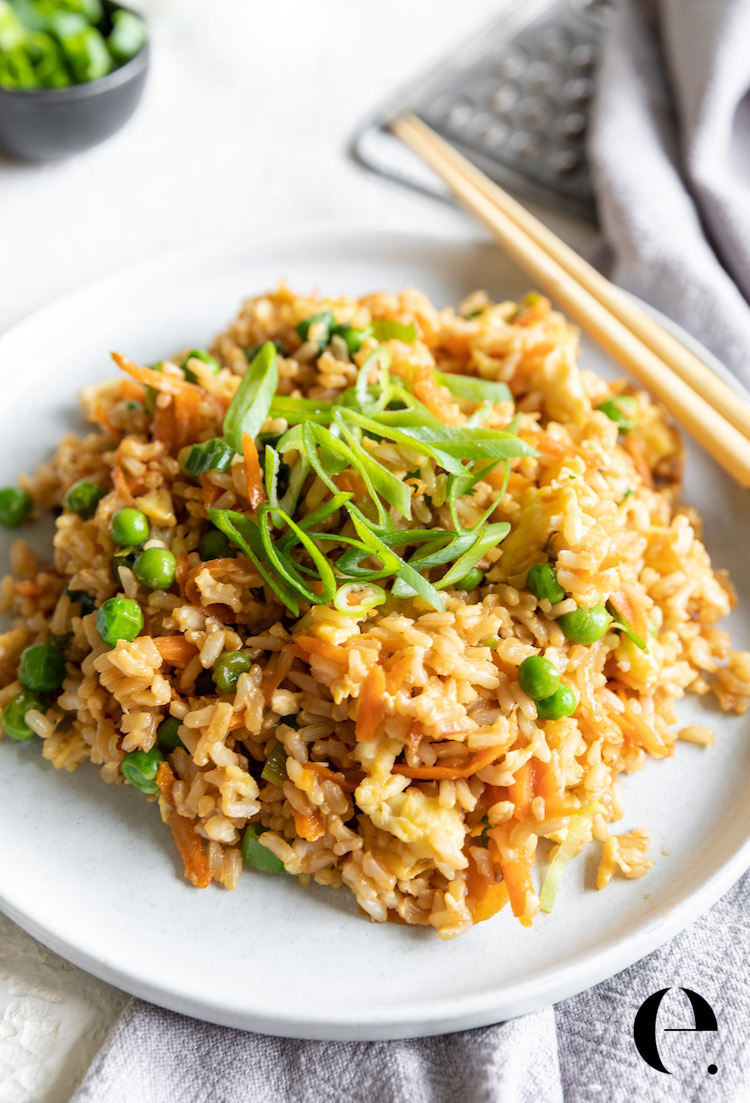
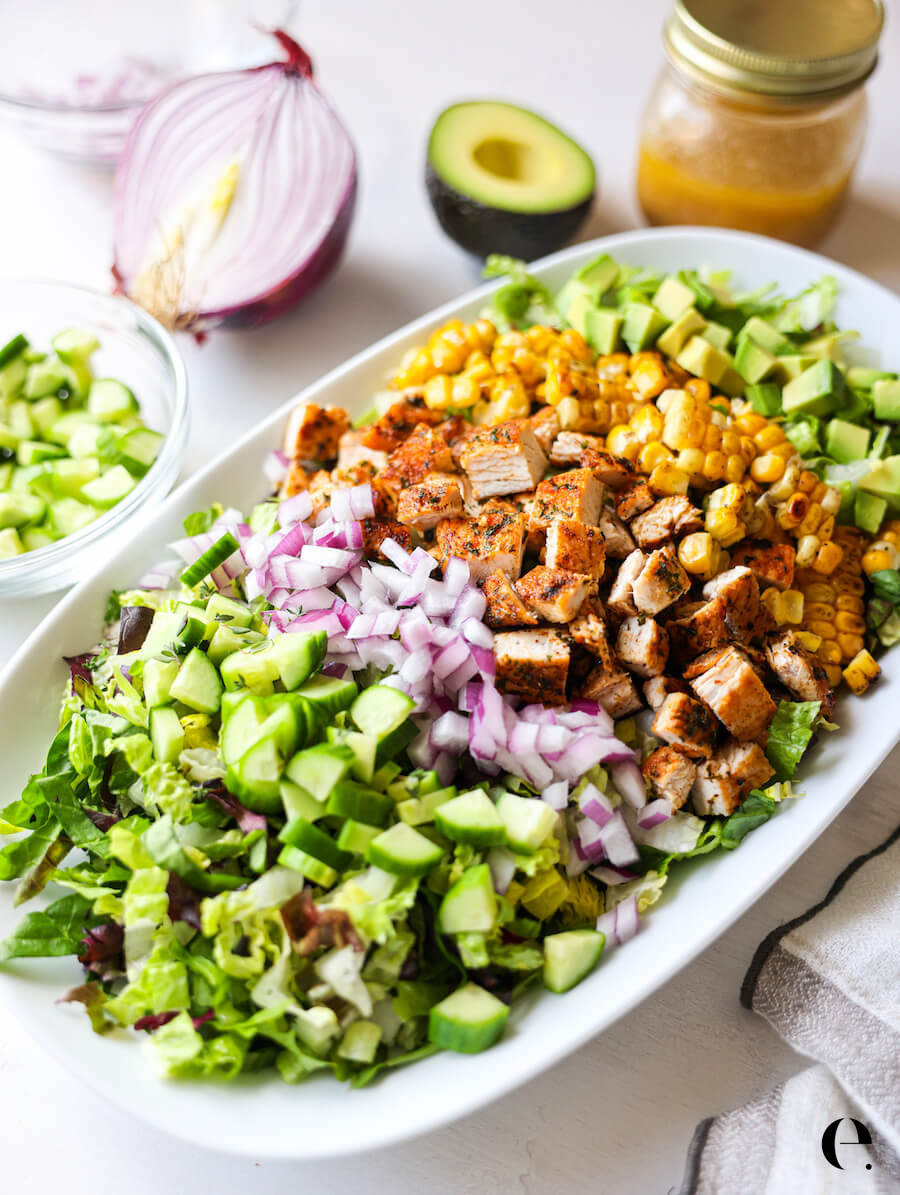
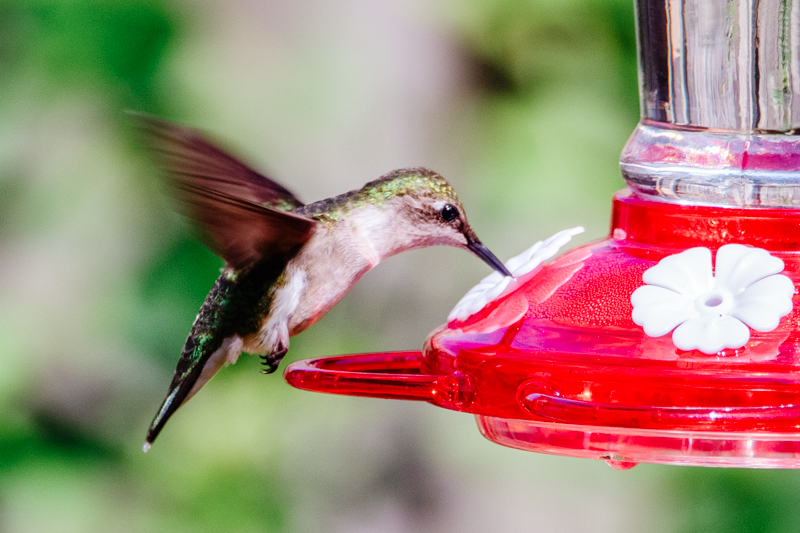
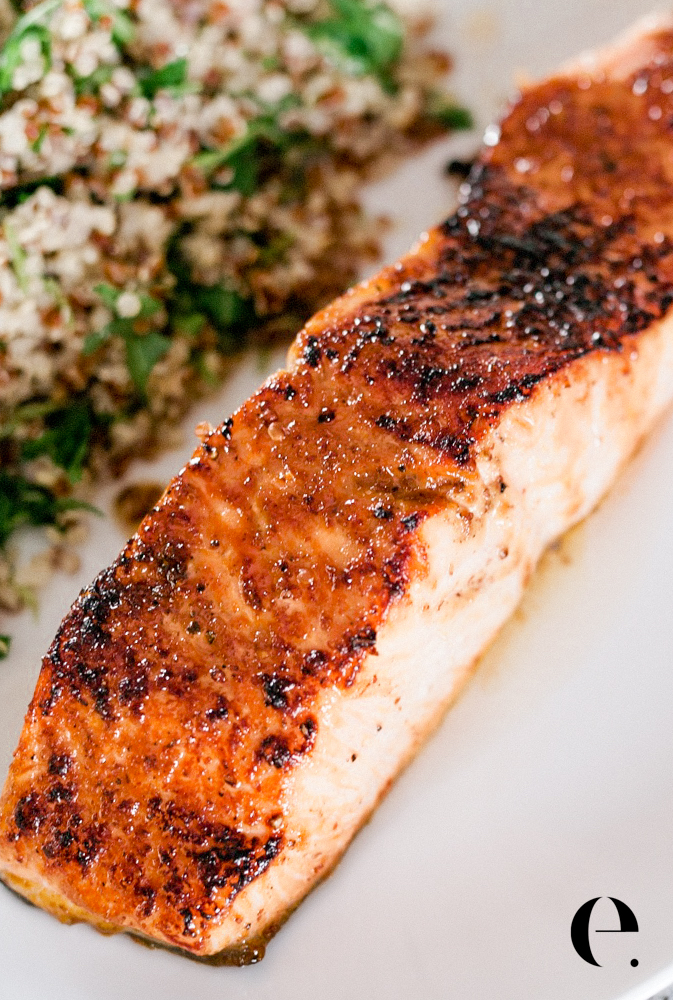
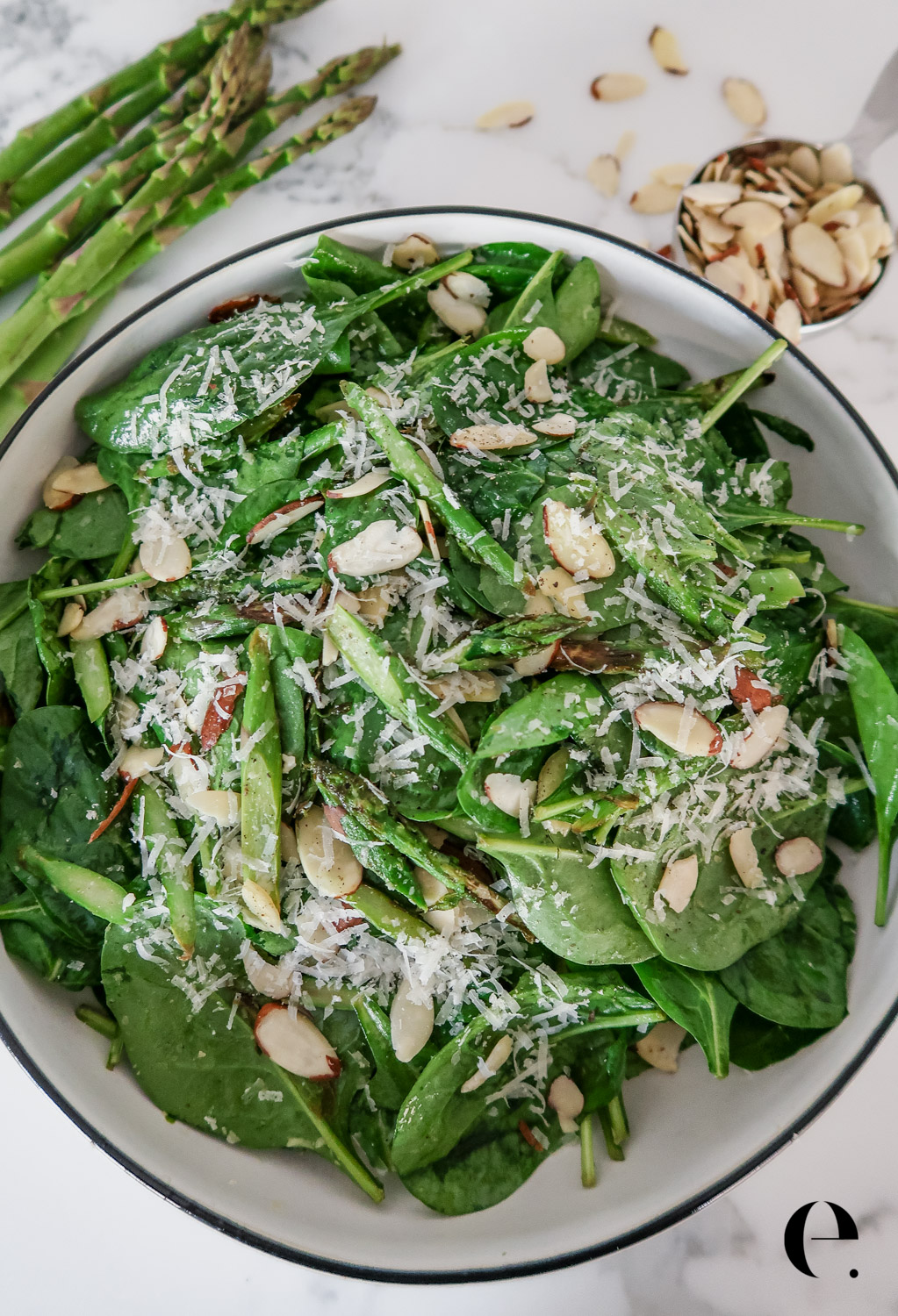
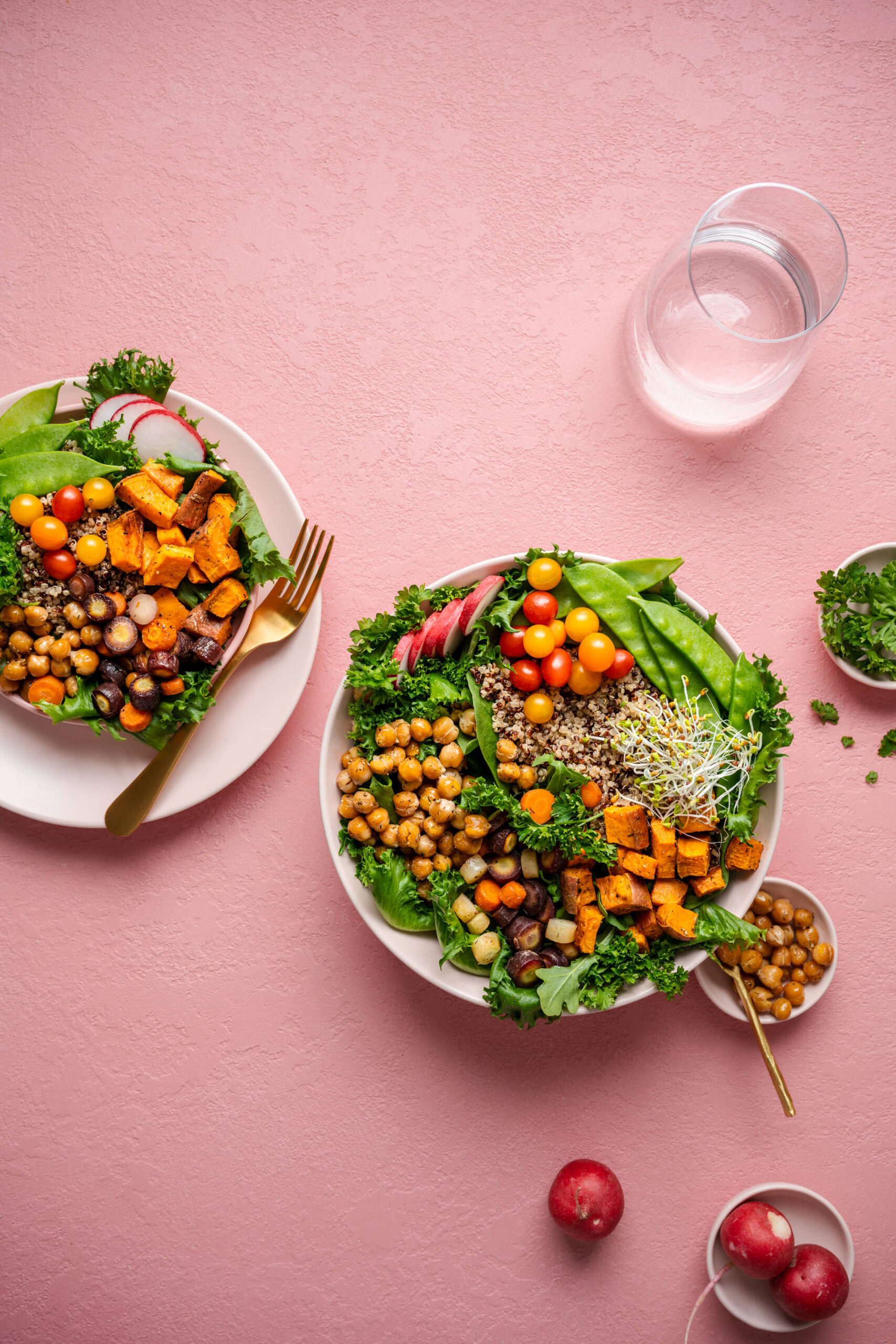
Leave A Review + Read The Comments →